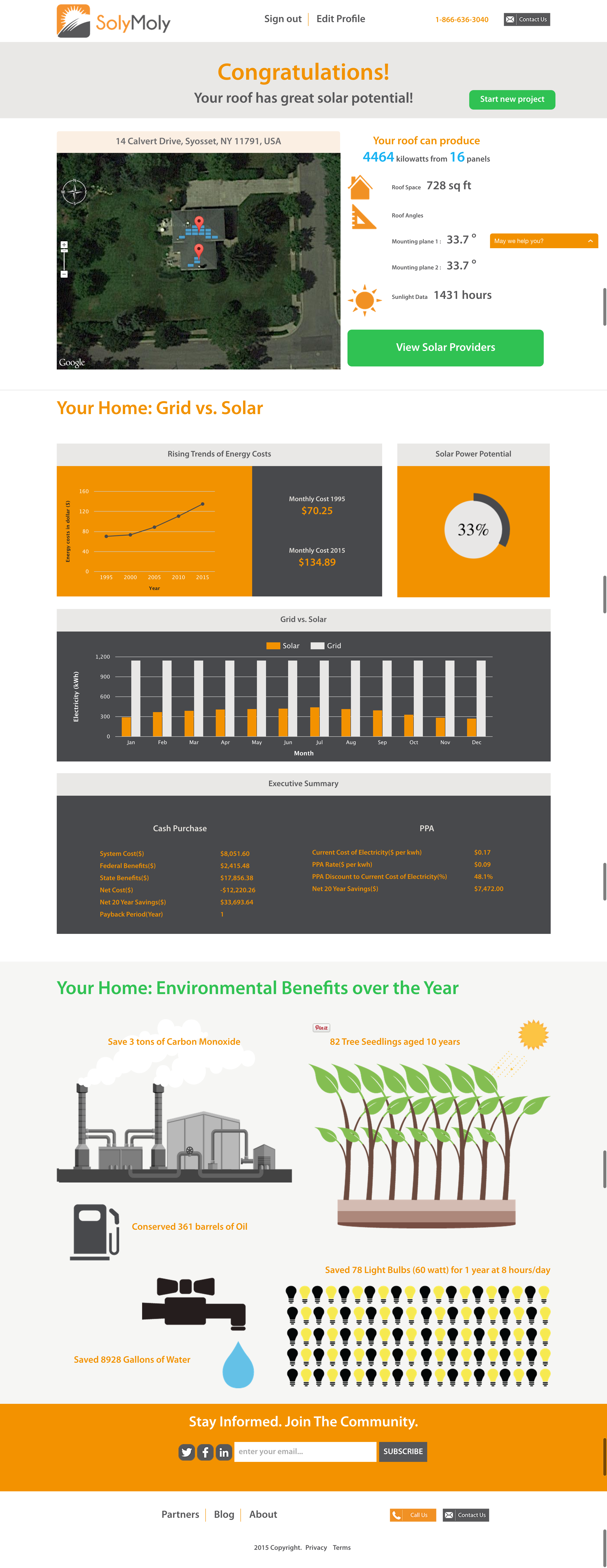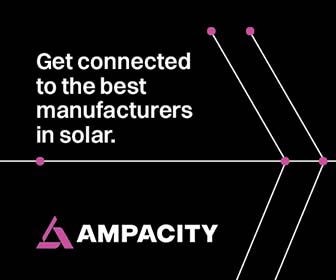Accelerating Customer Acquisition
Helping installers spend less time on the phone and more time on the roof
 Across the United States, the solar energy market is expected to grow by as much as 60 percent in 2016, with a healthy portion of that coming from residential installations. And, according to GTM research, the nation’s share of expected global PV demand between 2015 and 2020 has increased from an average of 10 percent to 15 percent with the recent extension of the federal Investment Tax Credit (ITC).
Across the United States, the solar energy market is expected to grow by as much as 60 percent in 2016, with a healthy portion of that coming from residential installations. And, according to GTM research, the nation’s share of expected global PV demand between 2015 and 2020 has increased from an average of 10 percent to 15 percent with the recent extension of the federal Investment Tax Credit (ITC).
While current policy initiatives and technological advancements in the solar supply chain are working in tandem to ramp up residential solar installations worldwide, there is still work to be done in order to reach peak adoption.
For some, it’s the lingering myth that only the wealthy and the environmental diehards are going solar. However, studies show on average, solar PV systems return two to four times their cost in saved electricity bills, and installations typically pay for themselves entirely within just seven to 15 years. If a homeowner lives in a state with solid incentives, such as California, this payback period can be as short as two to four years.
But what about those homeowners who want to go solar, and just aren’t sure where to begin? Add to that an ever-expanding array of options and stress of cold calls from solar companies, it’s easy to give up on the idea entirely. For this group, the solar adoption process feels a little too much like walking onto a car lot. They might be more interested in information gathering and test drives than committing to a same-day purchase, but they’re immediately surrounded by pushy salespeople practically screaming, “Buy, buy, buy!” before they’ve had a chance to really research their options.
Today, smart online platforms are bridging the divide between homeowner and installer by empowering the customer from day one. These dynamic tools offer homeowners the opportunity to vet their options for adopting solar from the comfort of their couches, the e-commerce experience many consumers have come to expect. Homeowners can quickly input monthly electricity use and billing information to calculate the economic benefits of going solar. Then, using satellite-supported mapping technology, homeowners can view their rooftops to better visualize a potential PV system. The most sophisticated options offer further customization, allowing homeowners to specify the precise rooftop area they would consider for solar panel installation to generate more accurate reports on potential savings and environmental impact. If, and when, a homeowner decides to take the next step, he or she can connect with qualified local installers with a few simple clicks.
For installers, these platforms are ushering in a new era where every lead is pre-qualified and eliminating the marketing headache of costly mailers and door-to-door canvassing. Today, nearly half of all leads aren’t appropriate fits for solar. To better qualify these leads, installers are generally using a combination of tools including shade analysis, credit analysis, address verification, service territory restrictions, and state laws. This is time-consuming, expensive, and often difficult to monitor.
With the support of online platforms, installers can access a customized portal which enables filtering by a number of criteria, including available rooftop area, rooftop shading, credit-worthiness, and customer interest level. When a promising lead is identified, installers can arrive to each meeting armed with a copy of the potential customer's profile. This detailed report accelerates the “kitchen table conversation” and gets installers’ boots on the roof as quickly as possible. Studies show online tools can improve operational efficiency and deal conversion ratios by as much as 40 percent, saving precious time and capital.
In an increasingly connected world, it makes sense that solar adoption expands to the web. Smart online marketing and sales tools are giving homeowners the ability to explore the potential of rooftop solar without feeling pressured or overloaded, a crucial step toward taking solar to the masses. By putting the power into consumers’ hands, the solar experience is improved, while also streamlining processes for the installers at the heart of the market. This is just the type of win-win scenario that can catapult solar into its next phase of growth, in the U.S. and abroad.
 Kathir Kuppan is the CEO of SolyMoly, the one-stop shop for the solar curious. Whether a customers’ goal is energy independence, carbon-footprint reduction, or simply saving money, SolyMoly does the heavy lifting. Starting with the specifics of a customer’s roof space and structure, homeowners can determine how to use solar to achieve their financial and environmental goals.
Kathir Kuppan is the CEO of SolyMoly, the one-stop shop for the solar curious. Whether a customers’ goal is energy independence, carbon-footprint reduction, or simply saving money, SolyMoly does the heavy lifting. Starting with the specifics of a customer’s roof space and structure, homeowners can determine how to use solar to achieve their financial and environmental goals.
SolyMoly | www.solymoly.com
Volume: 2016 March/April









.png?r=6243)


